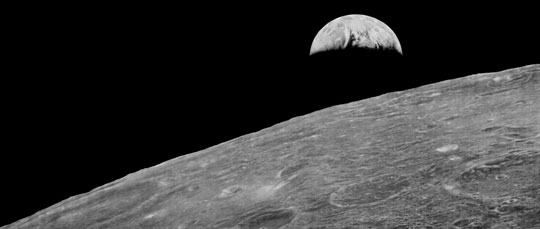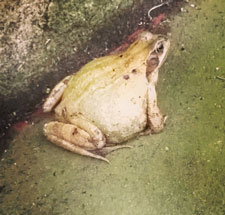
It’s 50 years since the first image of the Earth from space was beamed back home from Lunar Orbiter 1. It’s hard for us now to imagine, or remember, what it meant back then. For the first time, humans could see a real image of their home as a whole. The picture, and others that followed, invigorated the environmental movement, and powerfully illustrated debates about our planet’s connectedness, its uniqueness and its vulnerability.
It was also a big moment for how human beings thought of themselves. Now, from an astronaut’s point of view, you could hold the world in the palm of your hand. Could this help us to reflect on our power and responsibility? What could we do to care for it better?
50 years on, we still struggle with these questions. We know that the Earth’s physical systems are under threat. Some of our lifestyles place heavy demands on resources, damaging the systems that sustain us. People suffer – often unfairly – from the consequences of over-consumption by others.
‘Limits to Growth’ returns
Six years after that first picture of Earth from space, in 1972, the Limits to Growth report tried to model how growing populations and industrialisation might take their toll on resources and the Earth’s systems. They tried to show how changing some of the growth trends could lead to more sustainable patterns of change. Limits to Growth had a mixed reception, and some groups offered detailed critiques and alternatives – addressing what they saw as a lack of attention to the ideologies, power, politics and institutions that shape development.
This year, Limits to Growth is back, if it ever really went away, with the launch of a new All-Party Parliamentary Group in the UK and a new report by Tim Jackson and Robin Webster, launched yesterday. The report suggests that many of the projections in the 1972 report have turned into reality.
It also links to other big ideas about how to analyse the world’s systems and respond to ecological crises. A section on ‘planetary boundaries’ suggests that the world’s biophysical systems are much more stressed than envisaged in 1972. The report also questions whether ‘decoupling’ economic growth from greenhouse gas emissions can work, and offers a ‘steady state economy’ and ‘degrowth’ as promising alternatives.
Whatever you make of this analysis and proposed solutions, it is undeniable that Limits to Growth continues to influence thinking about consumption and the environment.
Politics and the toad’s eye view
But in some ways, the most challenging bit comes at the end – what do we do about this? With the creation of an All Party Parliamentary Group, the aim is to “open out political space both about limits and about the possibilities for change”. The report also calls for “developing and operationalising” “visions for prosperity”.
The success or failure of this kind of political space rests on how this “developing and operationalising” is done, with whom, and what questions are asked. These should include being able to question how ideas of ‘limits’ and ‘scarcity’ are used, what are the consequences of framing debates around these ideas, and what alternative framings there are.
 As well as the astronaut’s eye view, we should look at the toad’s eye view – the diversity of settings, cultures and ways of seeing at ground level. So are we more comfortable as astronauts, or toads?
As well as the astronaut’s eye view, we should look at the toad’s eye view – the diversity of settings, cultures and ways of seeing at ground level. So are we more comfortable as astronauts, or toads?
To tackle the scandals of poverty and inequality, in ways that take account of the environment, we need to include the voices of the poor and most vulnerable, include their understanding of the problems, and how things might change. We need to be aware of our power and powerlessness. We may be able to change the planet’s systems irreversibly, but we cannot bend social and economic systems to our will, even if we wanted to. Our understanding of green transformations is much richer than that.
In the world’s least developed countries (LDCs) there are real opportunities to change things like energy and food systems in ways that don’t follow the mistakes of the past. To do this in a just and democractic way, political spaces must be created – not just in the West, but in countries, cities and rural areas where new ideas and innovation can happen.
A political space for climate and the SDGs?
Creating a productive political space is also the big challenge for the Sustainable Development Goals, also launched this year. And today (Earth Day), the climate agreement produced from COP21 in Paris is due to be signed by more countries than ever. If they are to be successful they need to be more than a series of targets and governmental programmes.
If given the chance, the SDGs and COP21 can indeed provide a space for political debate about visions and pathways for change. But this debate needs to be truly open. It means all of us working for more sustainable futures should be aware of what alliances can be built, and what connections can be made, across continents, different forms of expertise, and social divides.
Image: NASA, Lunar Orbiter Image Recovery Project, Public Domain, Wikimedia commons